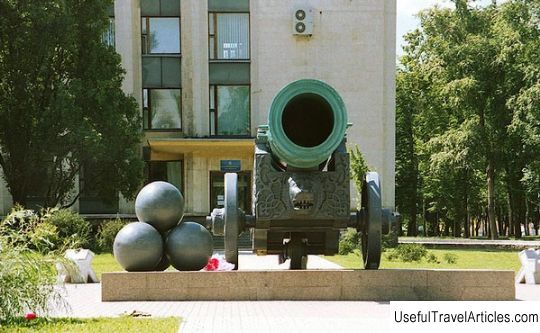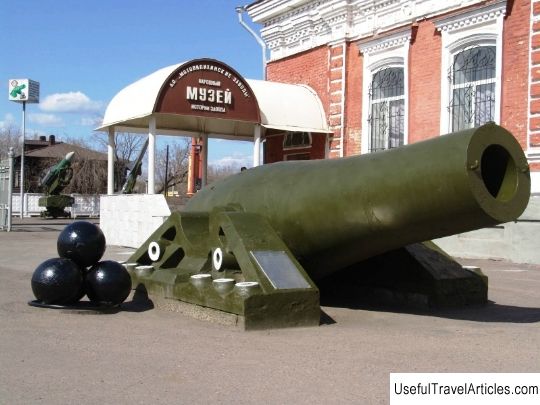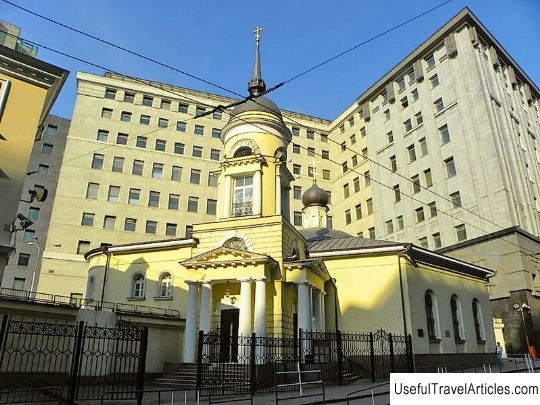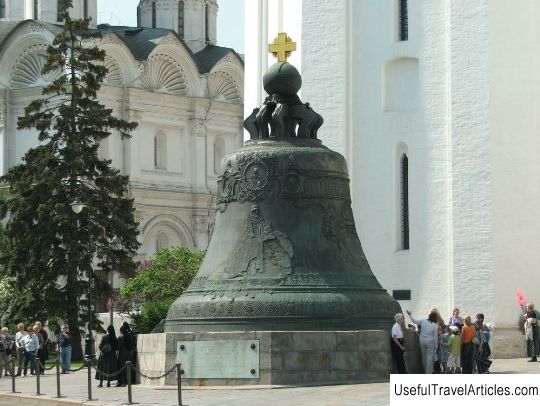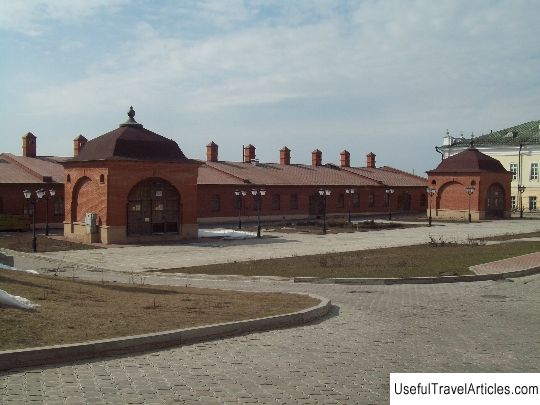Tsar Cannon description and photo - Russia - Moscow: Moscow
Rating: 8,2/10 (2087 votes) 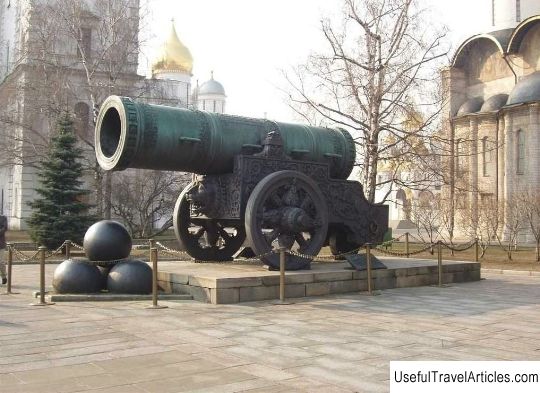
Tsar Cannon description and photo - Russia - Moscow: Moscow. Detailed information about the attraction. Description, photos and a map showing the nearest significant objects. Photo and descriptionOn Ivanovskaya Square of the Moscow Kremlin, an artillery piece has been installed, which is considered the most significant work of Russian arms makers. The Tsar Cannon is not just a masterpiece of the fortress artillery of the modern era, but also one of the largest cannons among all known in the world. The Tsar Cannon has been serving as a museum relic since the 30s of the 19th century, when it was installed near the entrance to the Armory. Today, a masterpiece of foundry art, made by the master Andrey Chokhov , is an exhibit of the Moscow Museum of Artillery Guns. The history of Russian firearmsThe invention of gunpowder was the impetus for the development and improvements to throwing weapons, which until the XIV century were widely used during the siege. The fortifications were now subjected to shelling from primitive artillery guns, the barrels of which were made of iron, and the shells were iron or stone cannonballs. Imperfect technology for the production of charges became the cause of injuries received by gunners when firing. After the technology for the production of powder in the form of a free-flowing mass was mastered, the effectiveness of artillery guns increased, and the caliber of the guns increased. The Moscow Cannon Yard was created at the end of the 15th century and was located on the Neglinka River in the area where Lubyanskaya Square is today. As a state enterprise, the Moscow Cannon Yard had modern melting furnaces, it employed hundreds of craftsmen and, in a technical sense, this manufactory was one of the most advanced among such enterprises. The most famous products of the Moscow Cannon Yard are the bronze pishchal by master Jacob in 1483, the guns installed in the Grisholm castle in Sweden and the Tsar Bell and Tsar Cannon sights in Moscow. In the 16th century, Russian artillery . The masters of the Moscow Cannon Yard cast heavy weapons called bombards, and by the beginning of the 18th century, there were 9,500 gunners professionally operating with heavy artillery in the Russian army. Collapsible molds began to be used to cast gun barrels. How the Tsar Cannon appeared In 1584, Tsar Feodor I Ioannovich , the third son of Ivan the Terrible, sat on the Russian throne. Boris Godunov was the tsar's brother-in-law. Since 1587, his position at court was so significant that he actually ruled the state. It was Godunov who came up with the idea to cast a huge artillery piece from bronze, which would symbolize the military power of the Russian army and the entire state. The name given to the gun, according to some historians, appeared due to its size. Others believe that the cannon is named in honor of Tsar Fyodor Ivanovich. In 1586, the master Andrey Chokhov fulfilled the tsar's decree and made the weapon that became the largest and glorified the name of the foundryman in centuries. At that time Chokhov had been working at the Cannon Yard for about 20 years and had extensive experience in casting artillery pieces. After the Tsar Cannon was ready, Andrei Chokhov took a special position among the rest of the foundry workers, and his experience began to be adopted by numerous students. The Tsar ordered to install the Tsar Cannon on Red Square near the Execution Ground. The symbol of military power symbolically guarded the Spassky Gate and the Intercession Cathedral and, at the same time, served as a passing reminder of Boris Godunov's role in the Russian state. Despite the full-fledged combat characteristics that were given to the weapon by the master, it never showed itself in real battle. Only once the Tsar Cannon was ready to fire, but it did not have to - the troops of the Crimean Khan Kazy-Girey retreated before the help of the main weapon of the Russian army was needed.        We also recommend reading Museum of the history of Krasnaya Polyana description and photos - Russia - Caucasus: Krasnaya Polyana Topic: Tsar Cannon description and photo - Russia - Moscow: Moscow. |
